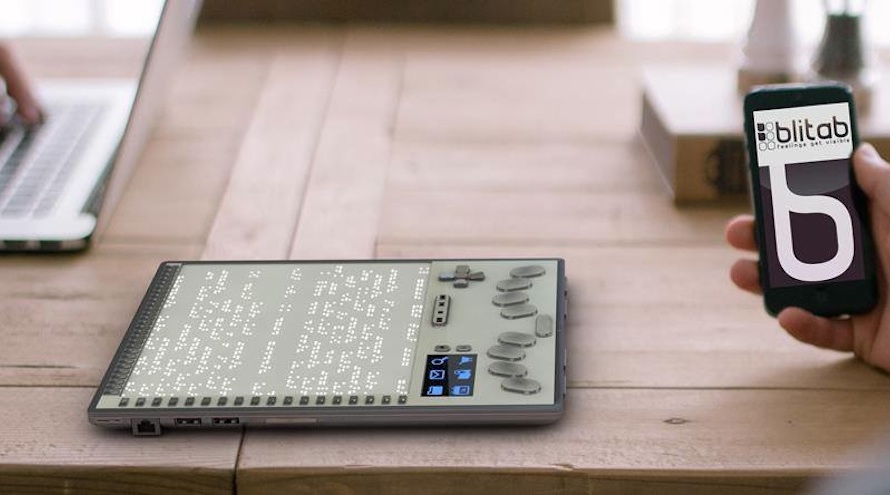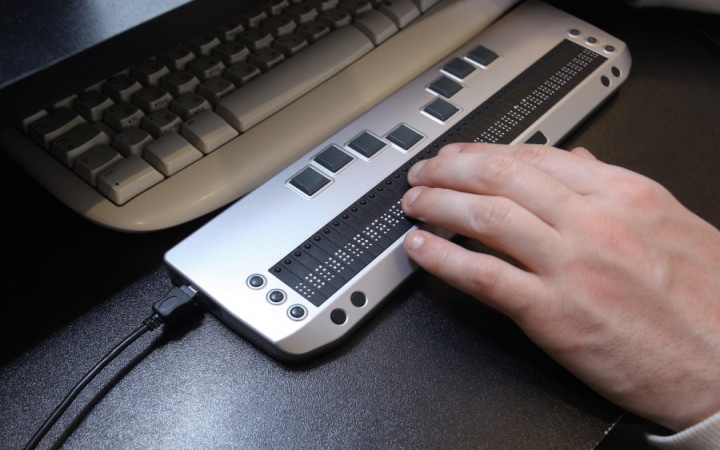Screen Readers for the Blind: Accessing Information Without Barriers
Screen Readers for the Blind: Accessing Information Without Barriers
Blog Article
Empowering Self-reliance With Assistive Modern Technology for the Blind
The combination of assistive technology into the lives of people with visual impairments stands for a considerable development in advertising self-reliance and self-sufficiency. From innovative screen viewers to advanced smart walking canes, these devices not just improve everyday navigation and communication but additionally encourage users to engage meaningfully in various elements of life. As we check out the myriad benefits and real-world applications of these technologies, it comes to be critical to take a look at the underlying aspects that contribute to their performance and the capacity for future developments in this crucial field.
Introduction of Assistive Technology

The advancement of assistive technology is based in concepts of inclusivity and empowerment. Technologies in software, equipment, and sensory enhancements provide customers with alternatives customized to their particular needs. From display readers that convert text to speech, to tactile tools that convey information with touch, these tools transform the means people engage with their environments.
In enhancement to useful applications, assistive technology cultivates higher social addition and engagement in different sectors, consisting of education and employment (Voice-activated assistive devices). As study and development continue to evolve, the possibility for assistive modern technology to better improve the lives of aesthetically damaged individuals remains appealing, leading the way for a much more fair society where everyone can grow
Kinds Of Assistive Gadgets
A range of assistive tools have actually arised to support individuals with aesthetic impairments, each made to fulfill particular demands and boost everyday performance. These tools range from low-tech services to high-tech technologies, supplying varied options for users.
Low-tech tools consist of magnifiers and large-print materials that assist in reading and writing. Braille tools, such as Braille stylus pens and slates, make it possible for tactile reading and interaction. Alignment and movement aids, like white walking sticks, aid individuals browse their atmosphere safely.
On the higher end of the spectrum, electronic magnification systems and screen visitors provide substantial assistance. Electronic magnifiers permit individuals to expand message and images on displays, while display viewers convert electronic web content right into synthesized speech, assisting in access to info on computers and mobile phones.
Smart device applications additionally play a crucial duty, providing attributes like text recognition and navigation help. Wearable innovation, such as smart glasses outfitted with enhanced reality, is arising as an encouraging tool to improve situational recognition.
Benefits of Assistive Innovation
The assimilation of assistive modern technology substantially enhances the top quality of life for individuals with visual disabilities. These modern technologies empower users by promoting self-reliance, enabling them to browse their settings much more effectively and perform daily jobs with greater convenience. As an example, display readers and zoom software application permit individuals to accessibility electronic details, promoting expert and academic opportunities that may have formerly been out of reach.
Additionally, assistive gadgets such as clever walking canes and GPS applications offer real-time navigating help, boosting movement and security. This boosted freedom not just boosts self-esteem however additionally motivates social involvement, permitting customers to get involved even more completely in their neighborhoods.
Assistive modern technology additionally promotes interaction, aiding customers attach with others via voice acknowledgment and text-to-speech applications. This capacity is crucial for preserving partnerships and accessing critical information.
In addition, the customization options available with several assistive technologies ensure that users can customize devices to their specific demands, even more improving functionality and effectiveness. Overall, the advantages of assistive innovation for individuals with aesthetic problems are profound, advertising an extra inclusive society where every person can seek their aspirations and objectives.
Study and Success Stories
Highlighting the transformative influence of assistive technology, many case research studies highlight how individuals with aesthetic problems have effectively incorporated these devices right into their lives. One compelling instance entails a college trainee that made use of display reading software program to browse academic products and online resources properly. This technology not only facilitated her education however likewise boosted her self-confidence in participating in discussions and team tasks.
An additional study features an expert that uses a smartphone application designed for navigation and object recognition. By utilizing this application, he has actually reclaimed autonomy in both his individual and job environments, enabling him to commute separately and engage with associates better.
In addition, a retired person shared her experience with braille e-readers, which allowed her to access a large range of literature and stay gotten in touch with her community via publication clubs.
These success anchor stories underscore the important function of assistive innovation in fostering independence, boosting quality of life, and advertising social integration for people with aesthetic disabilities (Braille displays and notetakers). By embracing these innovative devices, customers can get rid of difficulties and seize possibilities that add to their professional and individual fulfillment

Future Patterns in Assistive Modern Technology
Technology in assistive modern technology is positioned to redefine the landscape of assistance for individuals with visual impairments. Arising fads highlight the combination of expert system (AI) and device learning, which boost the capability of gadgets that assist with navigation and details access. For example, AI-driven applications are currently efficient in interpreting visual information in real-time, making it possible for individuals to engage with their environment extra separately.
Additionally, the growth of wearable technology is advancing quickly. Smart glasses equipped with enhanced fact (AR) can offer audio summaries of surroundings, transforming just how users communicate with public rooms. These devices not only advertise freedom but additionally foster social inclusion.
Additionally, the Web of Points (IoT) is making homes smarter, allowing for smooth connection between assistive gadgets and day-to-day devices. This connectivity equips individuals by making it possible for voice-activated controls and automatic actions tailored to private demands.
Conclusion
To conclude, assistive modern technology plays a critical function in equipping individuals with visual problems by boosting their freedom and involvement with their environments. The varied variety of applications and devices available not only facilitates navigation and communication but also promotes social integration and opportunities for personal and professional development. As advancements proceed in this area, the possibility for boosting the lifestyle for those with visual disabilities will certainly increase, cultivating higher autonomy and empowerment.

Report this page